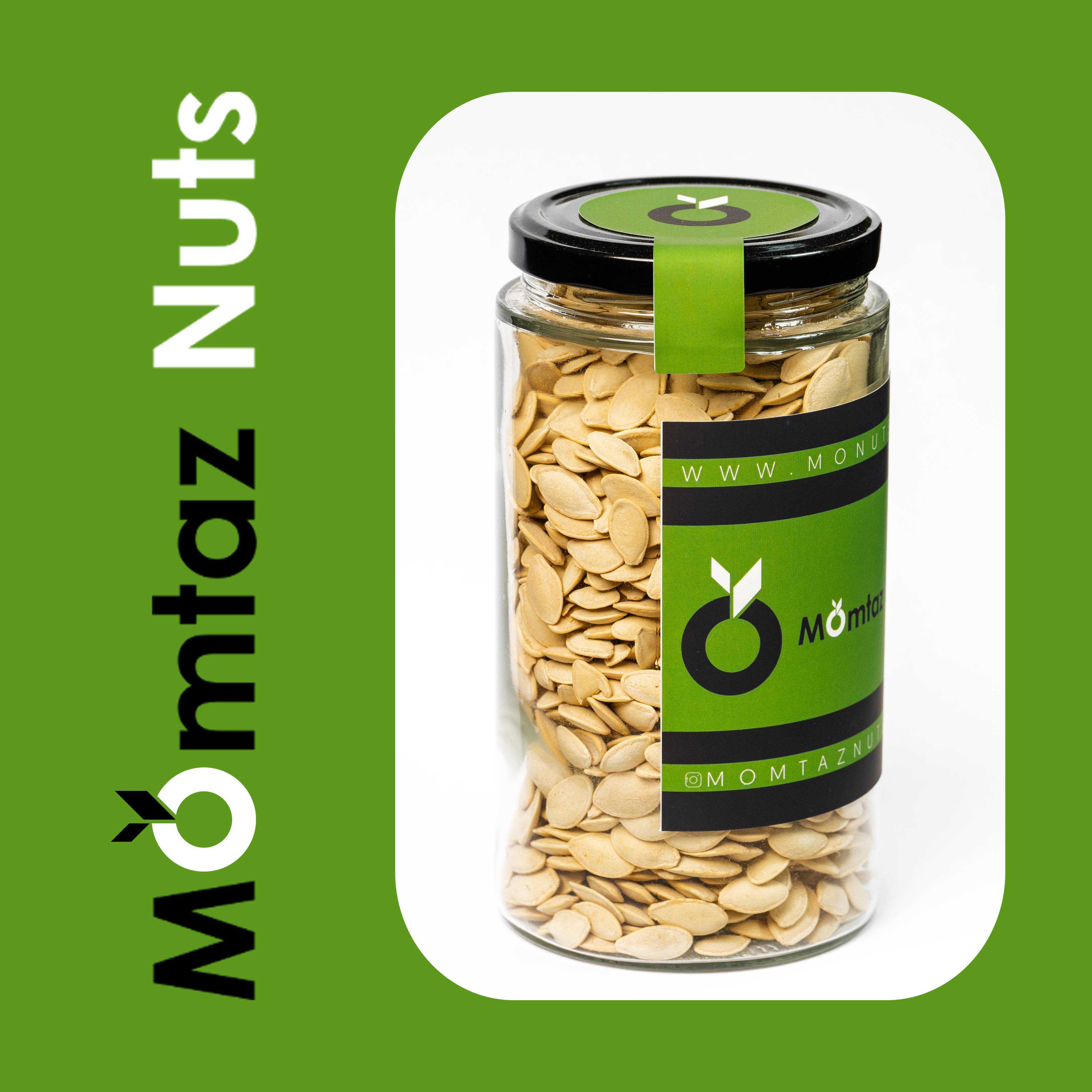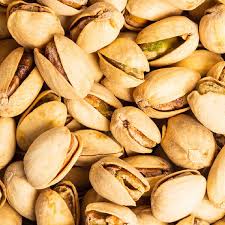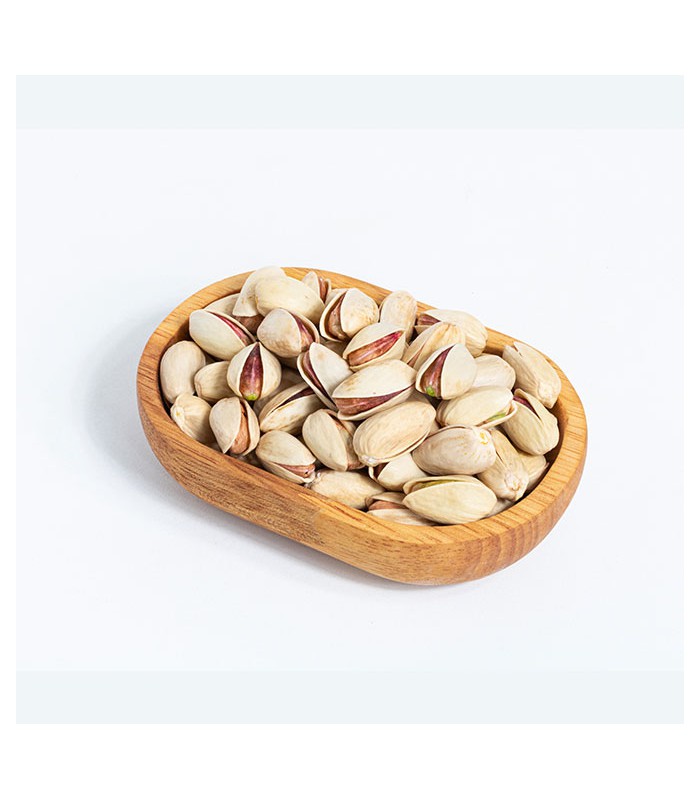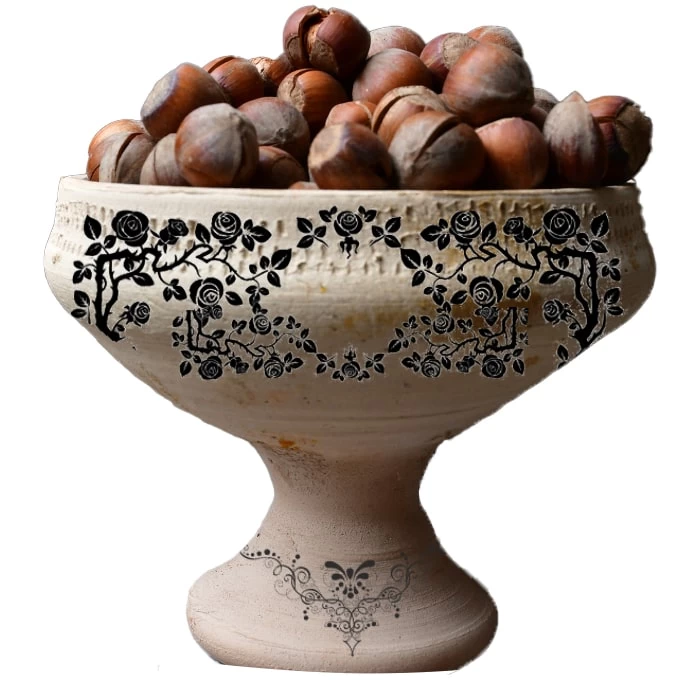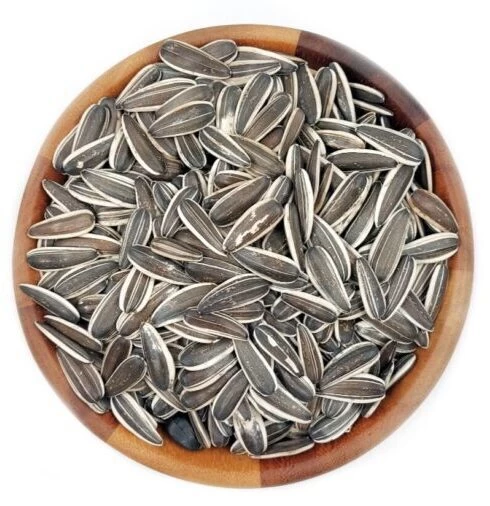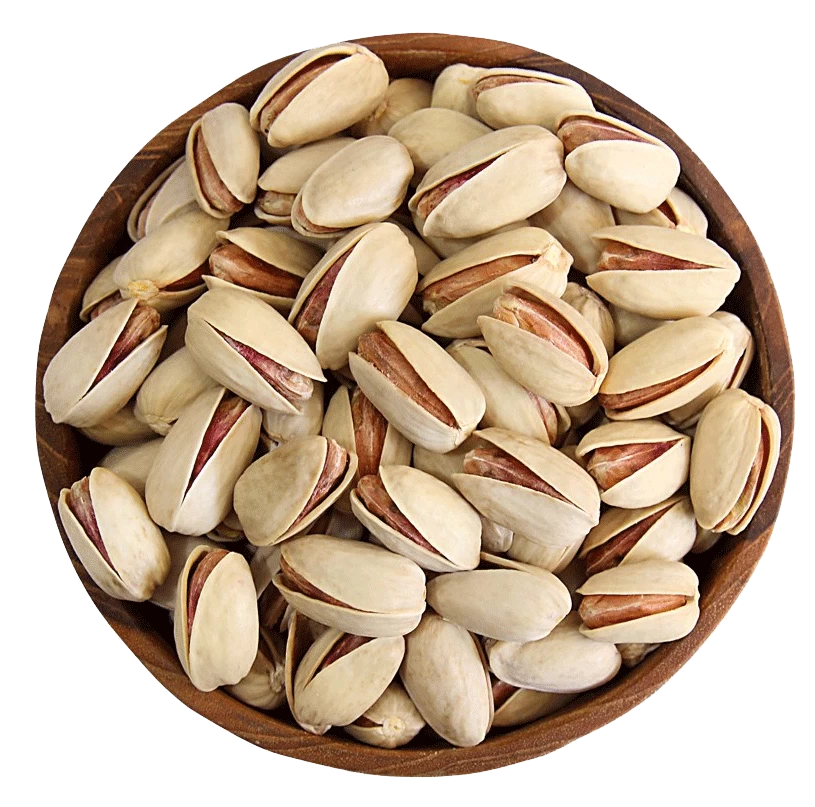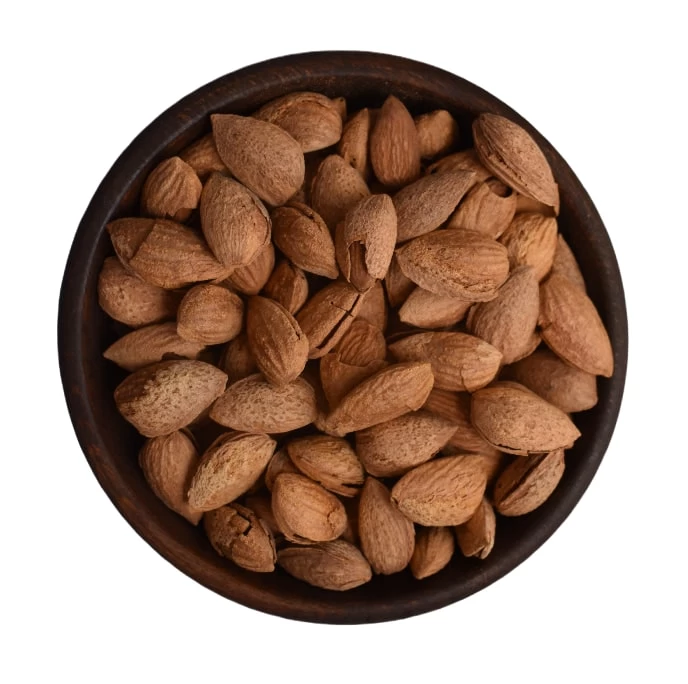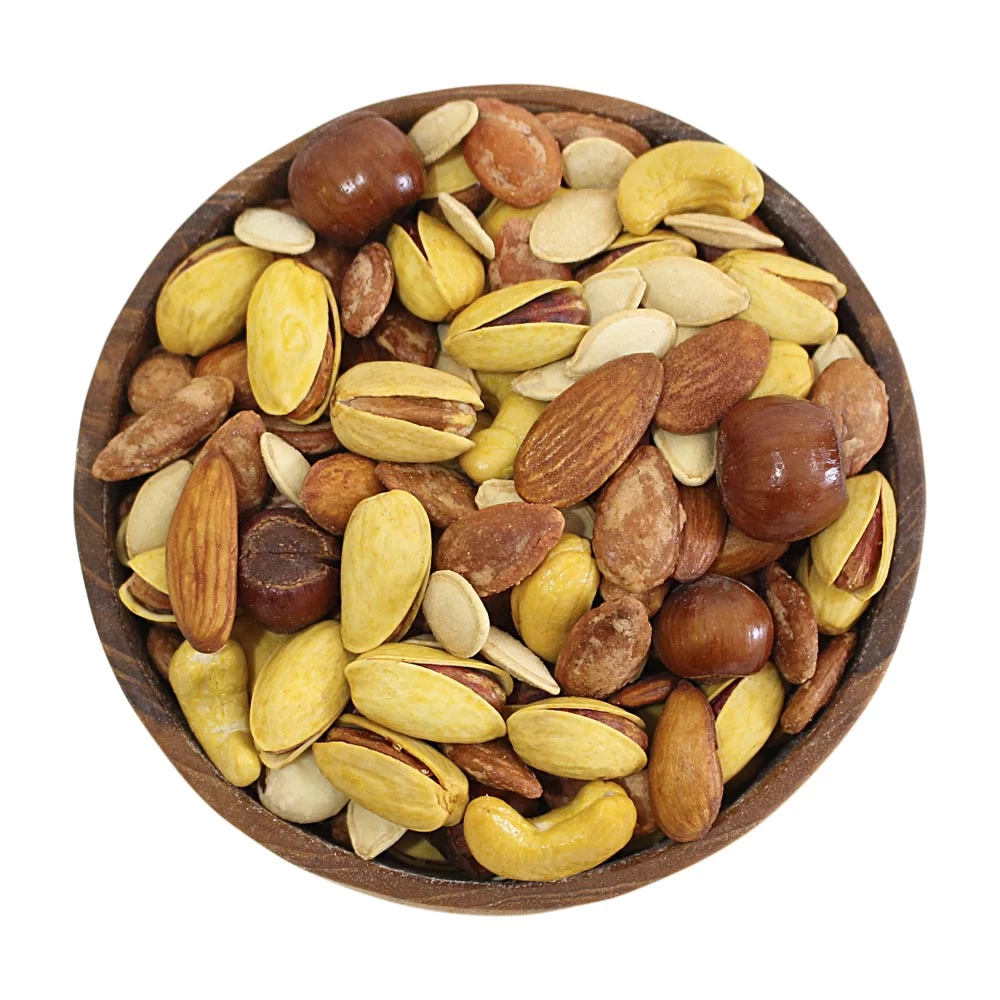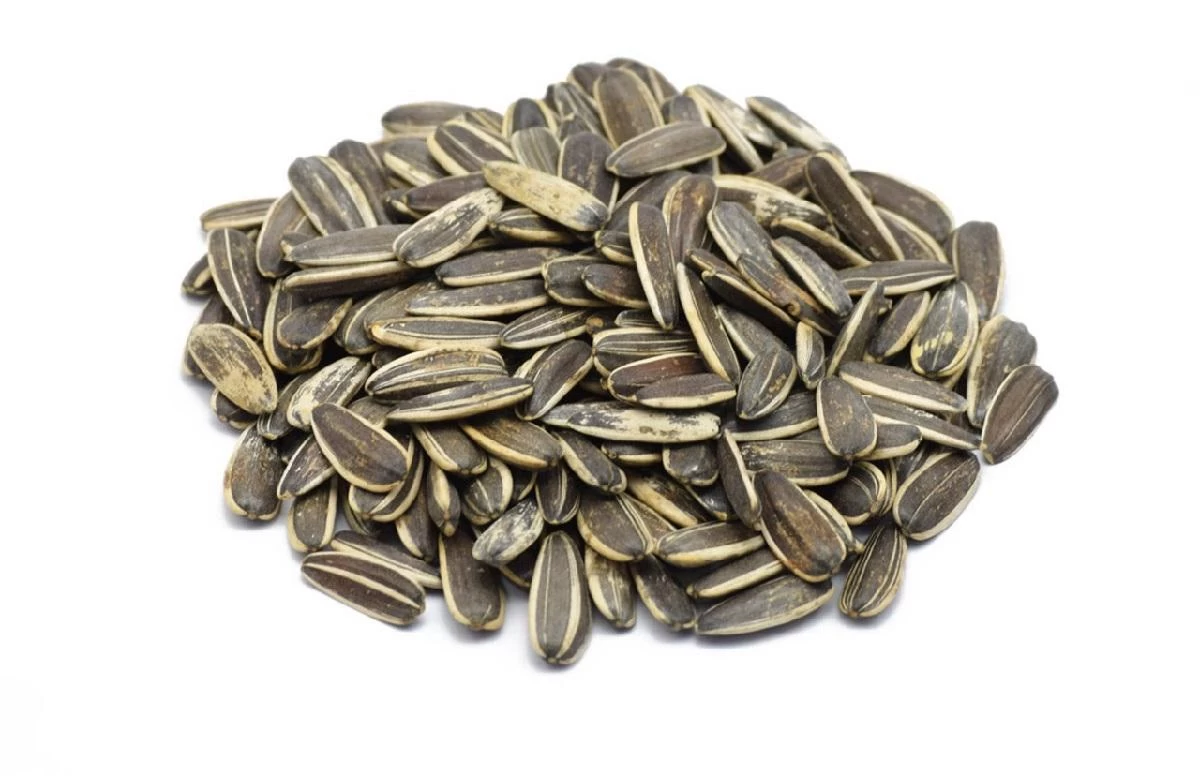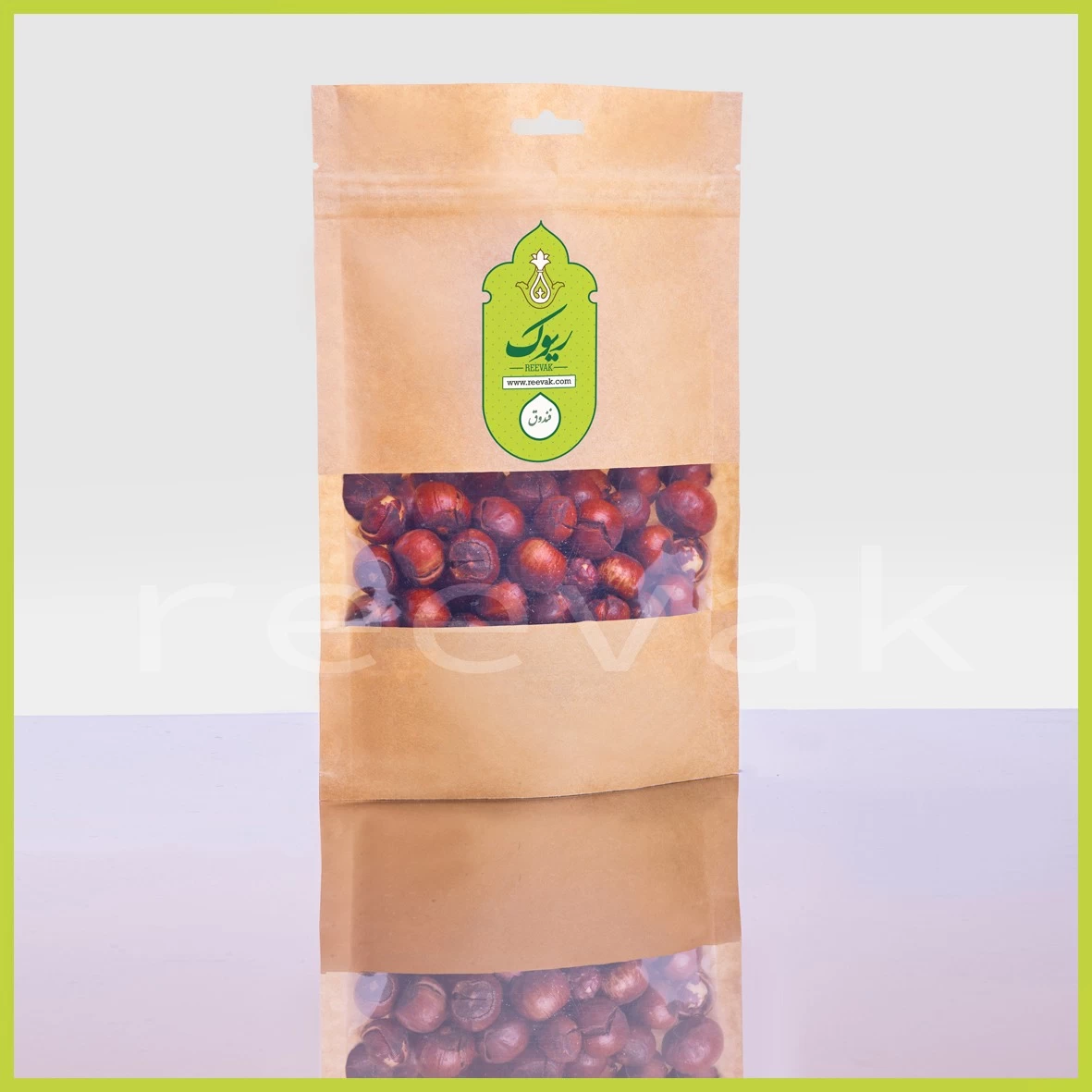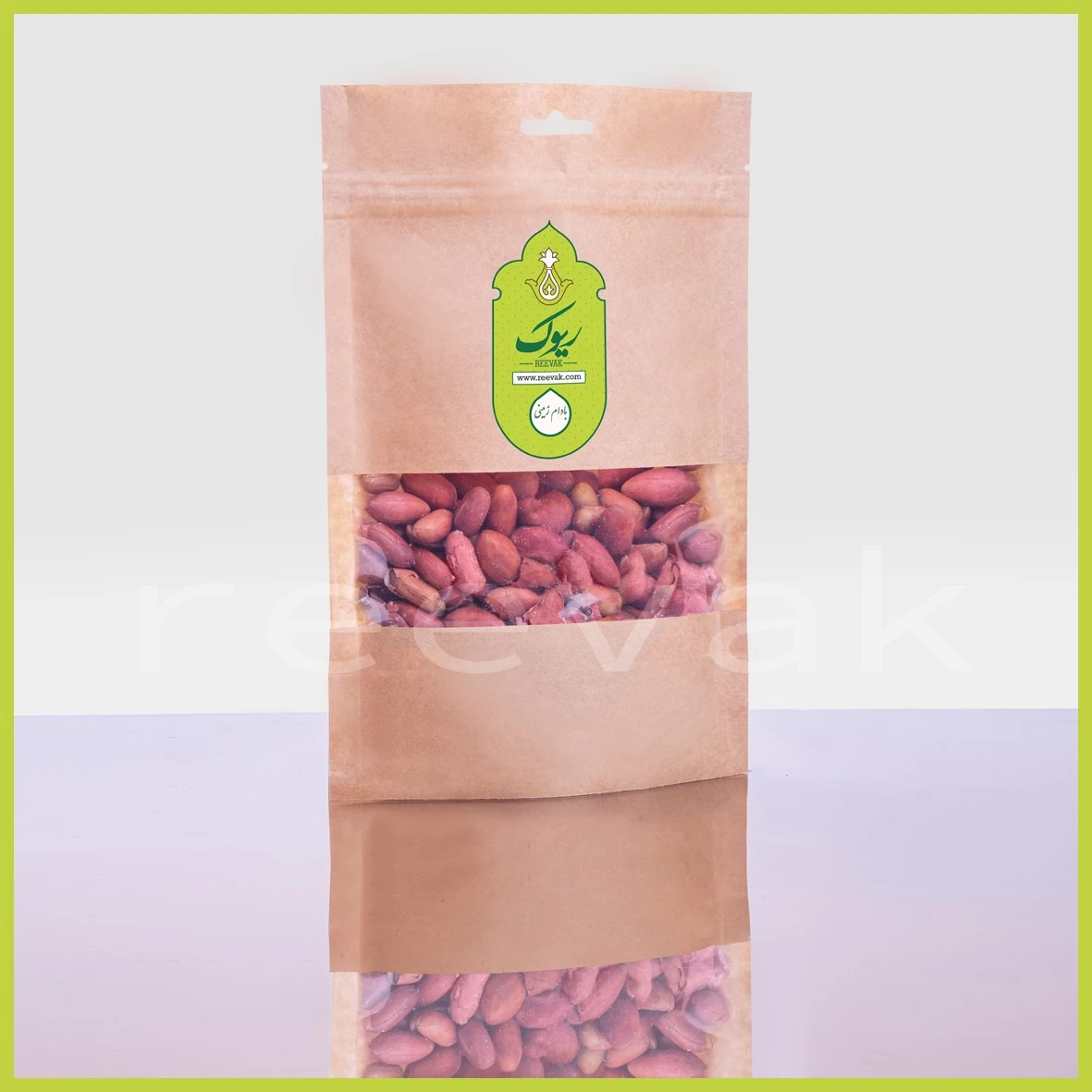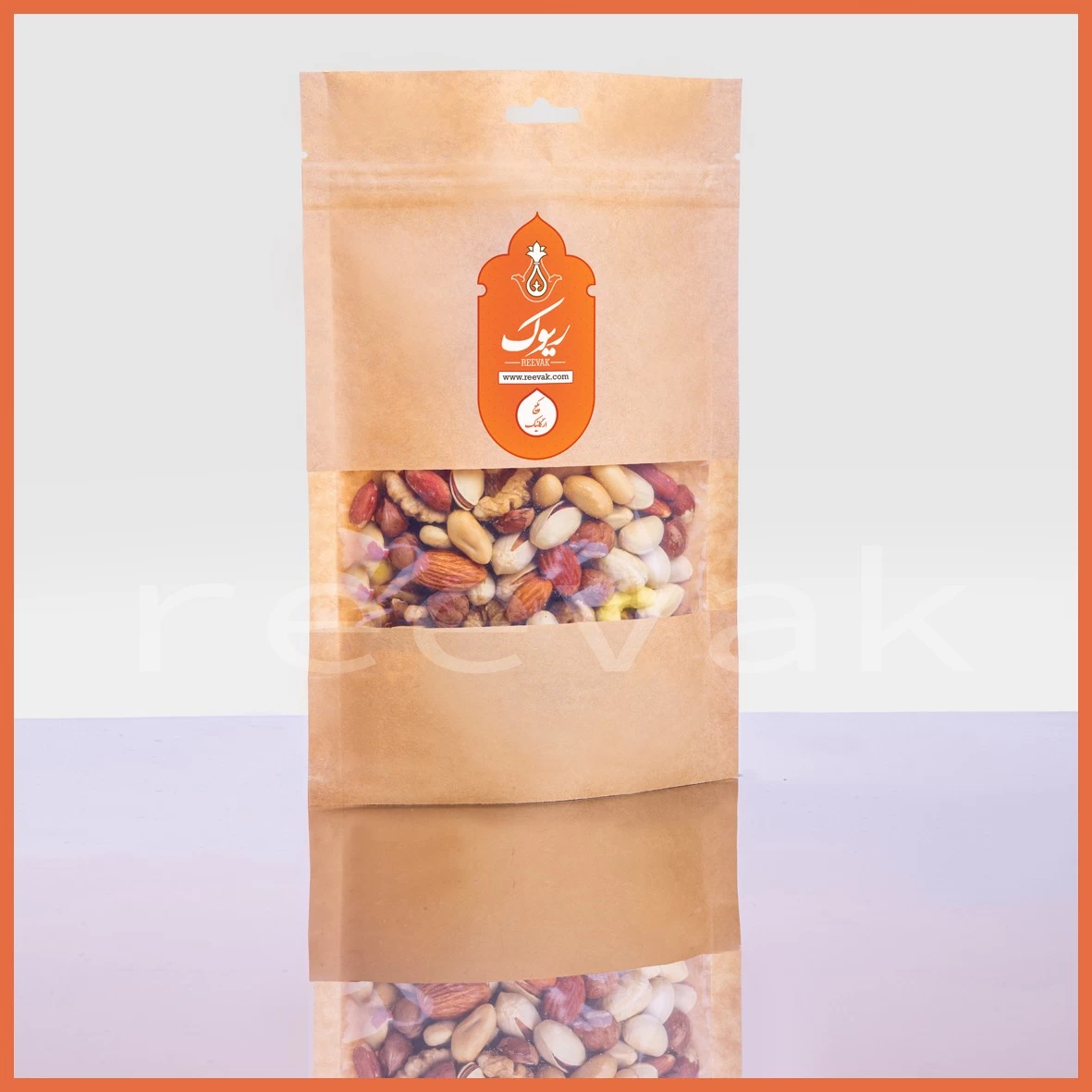nuts
Nuts are edible seeds or fruits enclosed in a hard shell. They are considered a nutrient-dense food and are valued for their high content of healthy fats, protein, vitamins, minerals, and antioxidants. Nuts are a versatile ingredient used in various cuisines and dishes, including snacks, desserts, salads, and main courses. Some common types of nuts include:
1. Almonds : Almonds are one of the most popular nuts, known for their mild, slightly sweet flavor. They are often eaten raw, roasted, or used in dishes such as almond butter, almond milk, and almond flour.
2. Walnuts : Walnuts have a rich, earthy flavor and a slightly bitter skin. They are commonly used in baked goods, salads, and as a topping for oatmeal or yogurt.
3. Pecans : Pecans have a sweet, buttery flavor and are often used in desserts such as pecan pie, as well as in salads and savory dishes.
4. Cashews : Cashews have a creamy texture and a mild, slightly sweet flavor. They are commonly used in Asian cuisines, as well as in vegan cheese alternatives and dairy-free desserts.
5. Pistachios : Pistachios have a slightly sweet, nutty flavor and a vibrant green color. They are often eaten as a snack, used in desserts, or added to salads and pilafs.
6. Hazelnuts: Hazelnuts have a rich, nutty flavor and are commonly used in desserts such as Nutella, as well as in savory dishes and baked goods.
7. Brazil Nuts : Brazil nuts have a creamy texture and a rich, buttery flavor. They are often eaten raw or roasted as a snack, and they are also used in desserts and as a topping for salads.
8. Macadamia Nuts : Macadamia nuts have a rich, buttery flavor and a creamy texture. They are often eaten raw or roasted, as well as used in baked goods and desserts.
Nuts are a healthy addition to a balanced diet and are associated with various health benefits, including improved heart health, weight management, and reduced risk of chronic diseases such as diabetes and cancer. However, it's essential to consume nuts in moderation as they are calorie-dense foods. Additionally, some people may have allergies to certain types of nuts, so it's important to be mindful of dietary restrictions and allergens when consuming or preparing foods containing nuts.
Almonds are edible seeds that come from the almond tree (Prunus dulcis), which is native to the Middle East and South Asia. Almonds are widely cultivated and consumed worldwide for their delicious taste and nutritional benefits. They are commonly eaten raw, roasted, or as ingredients in various culinary dishes and products.

Here are some key features of almonds:
1. Nutritional Profile : Almonds are highly nutritious and are packed with essential nutrients. They are an excellent source of healthy fats, protein, fiber, vitamins (such as vitamin E and B vitamins), minerals (such as magnesium, calcium, and iron), and antioxidants.
2 Health Benefits : Almonds are associated with numerous health benefits. They are known to promote heart health by reducing LDL cholesterol levels and improving blood lipid profiles. Almonds may also help in weight management due to their satiating effect and ability to regulate blood sugar levels. Additionally, almonds are beneficial for skin health, brain function, and bone health.
3. Versatility in Culinary Use: Almonds are a versatile ingredient and can be incorporated into various culinary dishes and products. They can be eaten raw as a snack, added to salads, granola, oatmeal, or yogurt, used in baking recipes (such as cookies, cakes, and muffins), or ground into almond flour for gluten-free baking. Almond butter and almond milk are popular alternatives to peanut butter and dairy milk, respectively.
4. Almond Varieties : There are different varieties of almonds, each with its unique characteristics. The two main types of almonds are sweet almonds and bitter almonds. Sweet almonds are the variety commonly consumed as a snack or used in cooking, while bitter almonds contain amygdalin, a compound that gives them a bitter taste and makes them unsuitable for consumption raw. Bitter almonds are primarily used to extract almond oil or in flavorings for liqueurs and almond extract.
5. Almond Farming : Almonds are grown in regions with warm, dry climates, such as California in the United States, Spain, Italy, Australia, and Iran. Almond trees require well-drained soil and adequate sunlight to thrive. Almond cultivation involves pollination by honeybees, as almond trees are dependent on cross-pollination to produce nuts.
Overall, almonds are a nutritious and delicious addition to a balanced diet and offer a wide range of culinary and health benefits. However, individuals with nut allergies should avoid almonds and almond-derived products.
Walnuts are edible seeds or nuts that come from the walnut tree (Juglans regia), which is native to the Mediterranean region and Central Asia. Walnuts are highly nutritious and are valued for their rich flavor, versatility in culinary use, and health benefits.

Here are some key features of walnuts:
1. **Nutritional Profile: Walnuts are nutrient-dense and contain a variety of essential nutrients. They are an excellent source of healthy fats, particularly omega-3 fatty acids, which are beneficial for heart health and brain function. Walnuts also provide protein, fiber, vitamins (such as vitamin E and B vitamins), minerals (such as magnesium, copper, and manganese), and antioxidants (such as polyphenols and flavonoids).
2. Health Benefits : Walnuts are associated with numerous health benefits. They are known to promote heart health by reducing LDL cholesterol levels, improving blood lipid profiles, and supporting healthy blood pressure levels. The omega-3 fatty acids in walnuts have anti-inflammatory properties and may help reduce the risk of chronic diseases such as heart disease, stroke, and diabetes. Additionally, walnuts may aid in weight management due to their satiating effect and ability to regulate appetite.
3. Versatility in Culinary Use : Walnuts are a versatile ingredient and can be used in various culinary dishes and products. They can be eaten raw as a snack, toasted and added to salads, granola, oatmeal, or yogurt, used in baking recipes (such as cakes, cookies, and bread), or ground into walnut flour for gluten-free baking. Walnut oil, extracted from walnuts, is used in cooking and as a flavorful finishing oil for salads and dishes.
4. Walnut Varieties: There are several varieties of walnuts, each with its unique characteristics. The most common variety is the English or Persian walnut (Juglans regia), which has a thin, light-colored shell and a mild, slightly sweet flavor. Black walnuts (Juglans nigra) have a thicker, harder shell and a stronger, earthier flavor compared to English walnuts.
Almonds are edible seeds that come from the almond tree (Prunus dulcis), which is native to the Middle East and South Asia. Almonds are widely cultivated and consumed worldwide for their delicious taste and nutritional benefits. They are commonly eaten raw, roasted, or as ingredients in various culinary dishes and products.

Walnuts are edible seeds or nuts that come from the walnut tree (Juglans regia), which is native to the Mediterranean region and Central Asia. Walnuts are highly nutritious and are valued for their rich flavor, versatility in culinary use, and health benefits.

FAQs
What does nut include?
Nuts are edible seeds or fruits enclosed in a hard shell
Where is nut used?
Nuts are a versatile ingredient used in various cuisines and dishes, including snacks, desserts, salads
What effect does nuts have on health?
improved heart health, weight management, and reduced risk of chronic diseases
Do we have several types of walnuts?
There are several varieties of walnuts, each with its unique characteristics.
 +7929688-88-14
+7929688-88-14

 English
English
 Persian
Persian
 Russian
Russian
 Chinese
Chinese


 +7929688-88-14
+7929688-88-14

